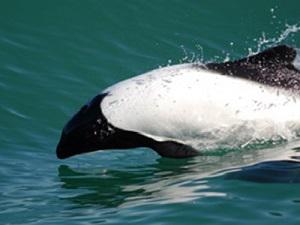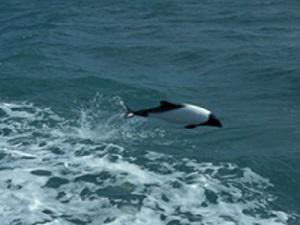Lida Pimper
Other projects
4 Apr 2011
Assessment of the Mitochondrial DNA Variation and Conservation Status of the Spectacled Porpoise, Phocoena dioptrica, around Waters off Southern South America
The overall aim of this project is to determine the genetic diversity and population structure of this species on the southern coasts of it distribution: Tierra del Fuego, south of Santa Cruz and Falklands Islands.

The genus Cephalorhynchus includes four species of small dolphins, each endemic to a different region of cold temperate to subantartic waters of the Southern Hemisphere. Of the four, Commerson’s dolphin, Cephalorhynchus commersonii has the largest area of distribution. It is found in shallow waters of the continental shelf of the eastern coast of South America between about 41º30’S and 56º S, including the central and eastern Strait of Magellan, waters around the Falkland Islands and, occasionally, the Drake Passage. An isolated population occurs some 8,000 km to the east at the Kerguelen Islands in the Indian Ocean.

Historically, Commerson’s dolphins have been taken for use as bait in the crab fishery, for oil, sport, live capture for exhibition, scientific specimens and even for food. Although most of these directed exploitation no longer occur in Argentinean waters, the species is still being caught incidentally in artisanal gillnet fisheries, especially along the shallow coastline of northern Tierra del Fuego and southern Patagonia. In the 2001 IUCN Red List of threatened Species, the Commerson’s dolphin is classified as ‘data deficient’. In Appendix II of CITES, it is considered as one of the species that are not necessarily threatened, but that may become so unless closely monitored.
The dolphins of this genus may have relatively low reproductive rates, and appear to be depth-limited coastal species with small home ranges. At present, there is little or no information on mating and the social system of these dolphins in the wild, their dispersal system or the relationship of inbreeding and out-breeding in populations.
No comparisons of genetic materials from this species have been made for the length of its range along the coast of South America or the Falkland Islands. The biological importance of by-catch is likely to be underestimated if the boundaries of sub-populations are not properly defined. In this study, we analysed samples (beachcast and biopsy) of Commerson’s dolphin to provide an assessment of the genetic structure of the populations from 3 main regions on the southern range of it distribution: Santa Cruz province; Tierra del Fuego-Chile; and Tierra del Fuego-Argentina.
A genetic and morphometrical study of specimens from these different areas would clarify their population structure with consequent implications for future management practices. This work plan is included in three research initiatives recommended by The Action Plan for the Conservation of Cetaceans of the IUCN.